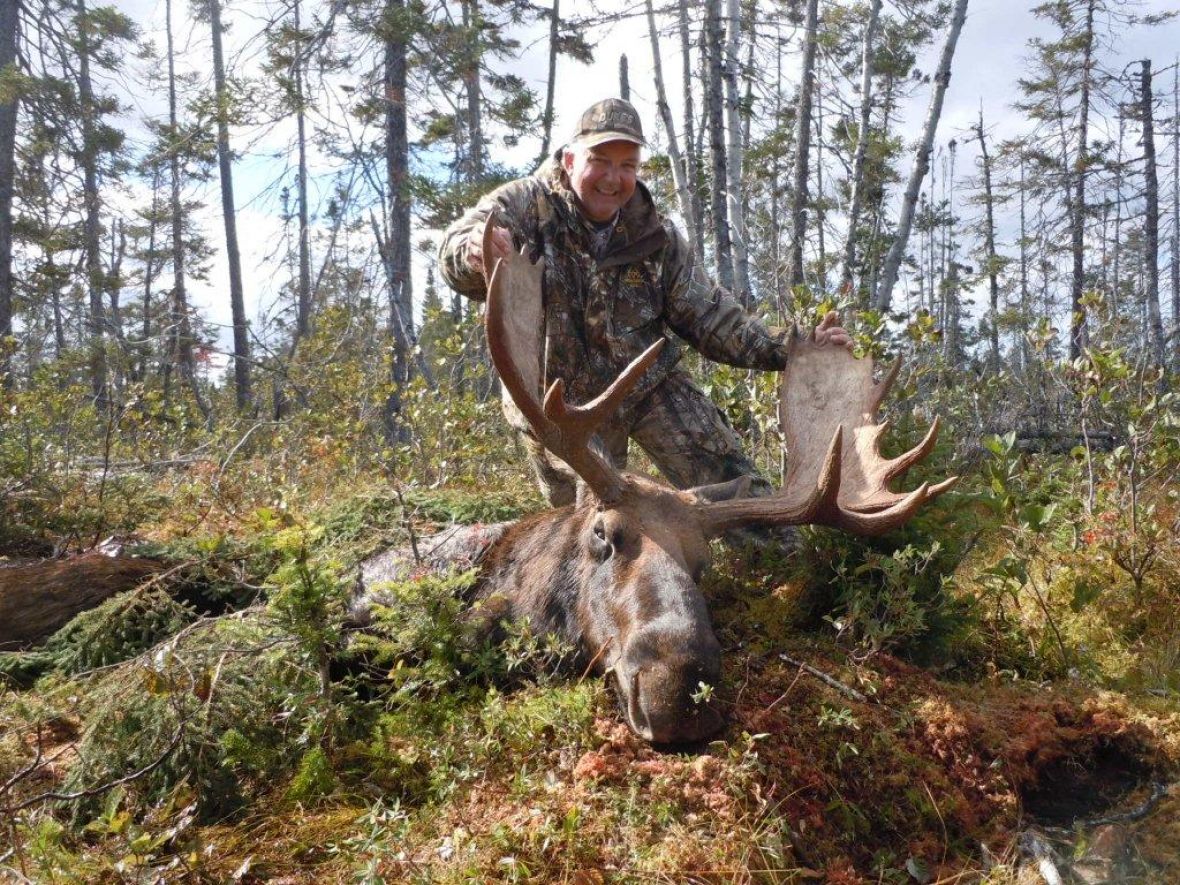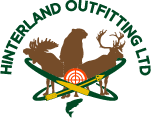Moose

Hinterland Outfitting Ltd., with twenty six years of moose hunting experience and well seasoned guides that have a combined total of nearly a century of guiding experience, can arrange and provide some of the best moose hunting Newfoundland has to offer. Without doubt Newfoundland is the best place in North America for moose hunting as all experts will agree that "The Rock as the island is known" has the densest moose population in all of North America. We also have one of the smallest population to land mass in all of Canada providing ample undisturbed areas for hunting.
We hunt in Moose Management Area 27 also known as Terra Nova. Visit the following link to see the actual location. https://www.gov.nl.ca/ffa/files/MMA27_y2020m07d16am_17by22.pdf We hunt in the top left corner of the management zone in blocks D,E,F. Numers 3,4 and 5.
Moose hunting is done in several different ways and mainly depends on the hunters choice. Most guides prefer calling which entails finding and choosing a suitable location, then sitting quietly within a blind for at least several hours while calling. It requires patience and the ability to sit and stay quiet for the entire time. The success rate is high and rewarding for those that do. Guides also perform spotting and stalking while walking on any number of the abandoned logging roads within our moose hunting area. For those moose hunters who have walking difficulties, Atv's or vehicle can also be utilized for hunting purposes. All moose hunting is mainly done in second growth forest where populations tend to be high because of the abundance of food. Trophies range in the 30" to 40" categories. Our moose hunting success rate is 85 per cent with nearly one hundred percent opportunity. Bull moose comprise of nearly ninety percent of harvested animals. Although we do have some either sex permits which allows the holder to harvest either a cow or a bull that we provide to our guests, we stress the importance of maintaining population numbers by refraining from harvesting female moose until later in your hunting week. With this in mind we will make exceptions for hunters who have difficulty in hunting due to physical restraints.
The moose rut usually begins in earnest around the last two weeks in September but mature bulls will often begin scraping their antlers in early September in preparation of this. We would like to make note here that over the past several seasons we have noticed that what was the normal time for moose to begin rutting, has been fluctuating from early September to the last of September. This appears to be common in other locations across Newfoundland also. We do not know the reason. Movement of Moose is far greater during the rut at which time we use “calling" extensively. Moose hunting is best for the first few hours after daylight and again at the last few hours before dark. Moose are generally shy animals and they have a very acute sense of smell and hearing. They also have fairly good eyesight and pick up unnatural movement very rapidly. It is well advised that moose hunters wear clothing that does not make a scraping sound when it comes in contact with brush, as often these animals have to be stalked to get into a suitable shooting position without getting "winded" by them. Shooting distances are most often less than 100 yards but hunters need to be able to shoot 200 yards if required. We cannot stress the importance of sighting in and practicing your shooting skills with your rifle prior to your arrival in Newfoundland to conduct any hunt. Rifles used for moose hunting should be 270 caliber or greater with at least 180 grain bullets. All rifles used for moose hunting should be sighted in for 200 yards. We strongly emphasize that moose hunters try and make a heart or lung shot if available. Animals that are hit in the legs or stomach area will most likely carry the bullet away and not be found because of the dense ground cover found in most areas of Newfoundland. Tracking animals under these conditions can be, and as in most cases, near impossible.
Government of Newfoundland Labrador - Our Wildlife
Hinterland Who's Who



